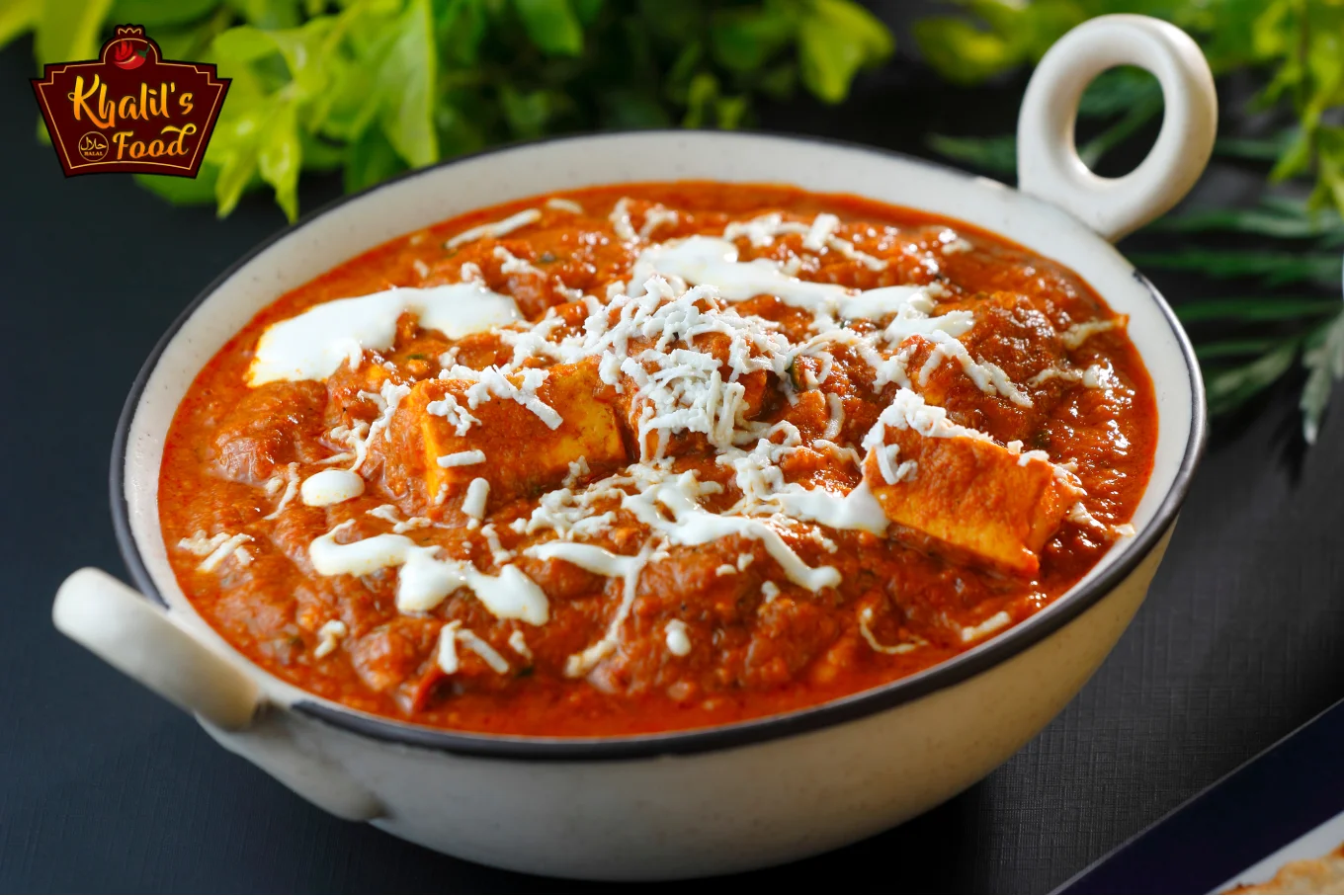How many calories are in Saag Paneer? This comforting Indian dish combines nutrient-packed leafy greens cooked with fragrant spices and tender chunks of paneer cheese. Whether enjoyed with roti, rice, or on its own, Saag Paneer is hard to resist. If you’re tracking your calorie intake or simply curious about what’s in your food, this article breaks down the calorie content of Saag Paneer in simple terms. You’ll learn what influences the calorie count, how homemade versions compare to restaurant servings, and whether Saag Paneer fits into your health and diet goals.
What Is Saag Paneer? A Delicious Indian Classic
Saag Paneer is a dish made by cooking green leafy vegetables—like spinach, mustard greens, or a mix of both—with Indian spices. Once the greens are soft and cooked down, they’re blended or mashed, then simmered with cubes of paneer, a soft Indian cheese that holds its shape while cooking.
Many people confuse Saag Paneer with Palak Paneer. Palak Paneer uses only spinach, while Saag Paneer can use several kinds of greens. That small difference can change the flavor and even slightly affect the nutrition. The final dish is usually creamy, flavorful, and full of aroma from garlic, ginger, and spices like cumin and garam masala.
Calories in Saag Paneer – Quick Answer
A cup of homemade Saag Paneer usually has between 250 to 350 calories. If you’re eating it at a restaurant, it might have 400 to 500 or more, especially if it’s cooked with butter or cream.
Most of the calories come from the paneer and the oil or butter used to cook the dish. The greens themselves are low in calories, but when you add cheese and fat for flavor, the numbers go up quickly. Also, portion size makes a big difference. If the restaurant serves a large bowl, it could easily be two servings or more.
Full Nutritional Breakdown of Saag Paneer (Per 1 Cup Serving)
Let’s take a closer look at what’s in 1 cup of homemade Saag Paneer:
- Calories: 300
- Protein: 13g
- Total Fat: 21g
- Saturated Fat: 11g
- Carbohydrates: 12g
- Fiber: 4g
- Calcium: 35% of daily value
- Iron: 20% of daily value
- Vitamin A: 85% of daily value
The dish has a decent amount of protein, mostly from paneer. It’s also high in calcium and iron, thanks to the leafy greens. There’s a good amount of fiber, which helps with digestion. The fat content is mostly from the paneer and any ghee or oil used in cooking. The carbs are fairly low, making it suitable for people watching their carb intake.
Ingredients That Influence the Calorie Count
The type and amount of ingredients used in Saag Paneer can make a big difference in how many calories it contains. Paneer is one of the biggest contributors. A 100g portion of paneer has about 265 to 300 calories, most of it coming from fat.
The greens—like spinach or mustard greens—are low in calories but rich in nutrients. They don’t add much to the total calorie count but do add a lot of fiber and vitamins.
What adds more calories is the fat used during cooking. Some recipes use ghee or butter, while others may include cream to make the dish richer. Just one tablespoon of ghee adds about 120 calories. On the other hand, spices like turmeric, coriander, or cumin don’t add any calories but do boost flavor.
Homemade Saag Paneer Calories vs. Restaurant Versions
When you cook Saag Paneer at home, you’re in control. You can limit the oil, skip the cream, and use low-fat paneer or even tofu. A home-cooked version can easily stay within the 250–350 calorie range per cup.
At restaurants, it’s a different story. To make the dish taste richer, they often add a lot of ghee, butter, or cream. Some even deep-fry the paneer before adding it to the greens. That can push the calorie count well beyond 500 per serving, not including sides like naan or rice.
Also, restaurant portions tend to be larger. Even if the menu says it’s one serving, the bowl may hold nearly double the standard cup size. If you eat the whole thing with a side of rice or bread, you could be looking at 900 to 1,000 calories or more.
How Cooking Methods Affect Calories
How you cook the dish also affects the total calories. For example, frying paneer adds more fat compared to lightly sautéing or grilling it. Some people bake or air-fry the paneer to get a crispy texture without extra oil.
The type of fat used matters too. Ghee and butter are high in saturated fat. If you use vegetable oil, olive oil, or avocado oil, you might save a few calories and cut down on saturated fat.
Cream also makes a difference. Using heavy cream or full-fat yogurt makes the dish richer but also heavier. If you want to lighten it up, you can use low-fat yogurt or coconut milk instead. These swaps can lower the calorie count by 50 to 100 calories per serving.
Saag Paneer in Different Diets
If you’re eating low-carb or keto, Saag Paneer is usually a good fit. It’s low in carbs and high in fat and protein, especially if made with full-fat paneer and cooked in ghee or butter. Just avoid eating it with rice or bread, and you’re good to go.
For vegetarians, it’s a solid source of protein. It’s also a good option for people who don’t eat meat but want something filling.
If you’re watching your calorie intake or trying to lose weight, you can still enjoy Saag Paneer by choosing a homemade version. Swap high-fat ingredients for lighter ones, and be mindful of your portion size.
For people with diabetes, the greens in Saag Paneer can help keep blood sugar levels stable, but it’s important to avoid pairing it with high-carb sides like white rice.
How to Make Low-Calorie Saag Paneer at Home
Making Saag Paneer at home gives you full control over how rich or light it is. To cut calories, start by using low-fat paneer or replace it with tofu. Tofu absorbs flavor well and has fewer calories than paneer.
Use just enough oil to cook your spices, and skip frying the paneer. Instead, bake or grill it. You can also steam the greens instead of sautéing them in oil.
Instead of cream, try low-fat yogurt, cashew paste, or oat milk for a smooth texture. These small changes can reduce the dish by 100 or more calories per serving, making it easier to include in a low-calorie meal plan.
Comparing Saag Paneer to Other Indian Dishes
When you compare Saag Paneer to other popular Indian meals, it usually falls somewhere in the middle for calories.
Butter Chicken, for example, can have 600 to 800 calories per serving, especially with all the added cream and butter. Chana Masala is lighter but higher in carbs due to chickpeas.
Palak Paneer is very close to Saag Paneer in ingredients and calories, but since it’s usually made with just spinach, it might have a little less fiber. If you’re trying to eat more protein and fewer carbs, Saag Paneer is a strong choice.
Saag Paneer and Weight Loss – Is It a Good Option?
If you’re trying to lose weight, you don’t have to cut Saag Paneer out of your diet. You just need to make a few smart changes. Stick to smaller portions, use lighter ingredients, and avoid pairing it with high-calorie sides.
Eating Saag Paneer with a whole wheat roti or brown rice makes the meal more balanced. Add a side of salad or some roasted vegetables to fill you up without adding a lot of extra calories.
Because it’s rich in protein and healthy fats, Saag Paneer helps you feel full for longer, which can make it easier to avoid snacking between meals.
Meal Prep with Saag Paneer – Balanced Indian Plates
Saag Paneer works great for meal prep. You can make a big batch and store it in the fridge for up to four days. It also freezes well, so you can keep portions ready for the week.
To keep things balanced, serve it with brown rice, quinoa, or whole wheat roti. Add a small bowl of cucumber yogurt (raita) or a mixed salad for a refreshing side. You can even pack it for lunch, and it reheats easily without losing flavor.
If you’re planning healthy vegetarian Indian meals ahead of time, this one is a dependable choice that doesn’t get boring.
Expert Opinions: Nutritionists Weigh In on Saag Paneer
Many nutritionists say that Saag Paneer can be a healthy part of your diet if eaten in moderation. It’s full of vitamins, calcium, and iron. The paneer provides good protein, and the greens are packed with fiber and antioxidants.
The main concern is the fat and calorie content, especially when cooked with too much oil or cream. Experts suggest using healthier oils, low-fat dairy, and lighter cooking methods to make the dish better for everyday eating.
If you’re watching your sodium or saturated fat intake, homemade Saag Paneer is a better option than restaurant versions. Small changes in ingredients go a long way.
Common Myths About Saag Paneer Calories
Some people believe that Saag Paneer is always unhealthy because of the paneer. But that’s not true. Paneer can be part of a balanced diet if you control the portion and how it’s cooked.
Another myth is that greens automatically make the dish low in calories. While the vegetables are low in calories, the oils, butter, and paneer can quickly raise the total. It’s not just about what’s in the dish—it’s also how it’s made.
People also assume all restaurant versions are the same. In reality, every place uses different ingredients. Some use cream, others don’t. So the calories can vary a lot depending on where you eat.
FAQs – Saag Paneer Calories & Nutrition Questions Answered
How many calories are in 1 cup of Saag Paneer?
Homemade versions have around 250 to 350 calories. Restaurant servings may go up to 500 or more.
Is Saag Paneer high in protein?
Yes, thanks to the paneer. One cup usually has around 13 grams of protein.
Can I eat Saag Paneer every day?
Yes, especially if you make it at home with lighter ingredients.
What is the best low-calorie substitute for paneer?
Tofu is the top alternative. It’s lower in calories and still high in protein.
Is Saag Paneer good for weight loss?
It can be. Use low-fat paneer or tofu and skip the cream to keep it light.
Does Saag Paneer work for a keto diet?
Yes, it’s low in carbs and high in fat and protein—just skip the rice or bread.
Final Thoughts – Enjoy Saag Paneer Without the Guilt
Saag Paneer doesn’t have to be a guilty pleasure. If you make it at home and use smart ingredient swaps, it can be a part of any diet—whether you’re watching your weight, cutting carbs, or just eating better. It’s filling, full of nutrients, and can be made to suit your health goals. The next time you cook or order it, keep this breakdown in mind. Saag Paneer can be as healthy as you want it to be.
Looking for more low-calorie Indian recipes or a homemade Saag Paneer recipe? Visit KhalilsFood.com for flavorful, healthy meals made simple.

